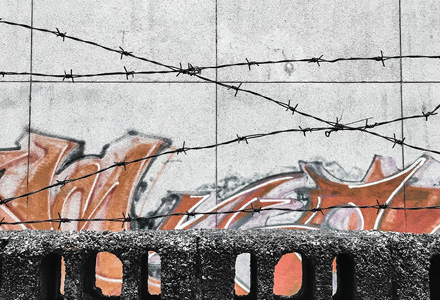
Taiwan’s Labor Incident Act (“LIA”) was announced on 5 December 2018 and will come into force on 1 January 2020.[1]
The core principles of the LIA are speed, appropriateness, professionalism, effectiveness and fairness, with the given aims of readjusting the structure of the employee-employer relationship, reducing the barrier to litigation for employees and strengthening their employment rights.
It’s important to note that labor disputes that arise before the implementation of the LIA can still be dealt with under the new law, as long as they have not been completed (i.e. by settlement or final and binding judgment) by that date. Businesses employing people in Taiwan should therefore take advantage of this period and prepare ahead of time for the implementation of the LIA. Below, we outline three main points worth considering.
Scope
Please keep in mind that the scope of the Labor Standards Act and Labor Incident Act are not the same. Labor Standards Act is a substantial law which provides the basis for employment relationships between the employer and the employee. The Labor Incident Act is procedural law which outlines how employment disputes should be handled.
Employers should be aware that the scope given for disputes to be settled under the LIA is quite broad. The law defines disputes as civil in nature, covering the rights and obligations between employers and employers, or those disputes where employment rights have been infringed upon.
However, due to the law’s basis for expanding the rights and obligations of both parties, the definition of “employee” and “employer” is relaxed, and the fact that related civil matters can be combined with or added to labor disputes, as well as allowing for counterclaims to be made during the litigation process mean that with this new scope comes increased risk. Two things that deserve special attention include:
- In addition to regular employers, recruitment agencies, dispatch employee companies, those that recruit people in trainee positions or similar roles are, under the LIA, considered employers. As an example, if there is a discrimination, sexual harassment or occupational safety dispute brought by a job applicant or dispatched employee, then this falls within the scope of the LIA.
- Secondly, the court will consider the work rules, labor-management conference decisions, labor norms and so on as the basis for trials, alongside the rights and obligations provided for by law.
Review all relevant documents
Businesses should use this time to review labor contracts and work rules and ensure that all employee records are up to date and maintained according to the law. As businesses bear the responsibility for proof, they should determine that employee records are complete (employee lists, attendance records, salary information etc.) and make sure that all contracts, work rules and other internal guidelines clearly define the obligations and rights under the employee-employer relationship. Clear definitions of what constitutes “wages” and “work hours” should be given.
1. Wages
Disputes over wages occur when it is difficult to judge the amount of money that a company should provide to an employee. It is a recurring payment, for a service performed, or given as a favor (ex gratia payment), for example retention bonuses. The determination of wages will affect how salary, pensions and/or severance pay are calculated.
Under the LIA, employees are only required to prove that payments occurred as part of an employer-employee relationship. It is the responsibility of the employer to prove that bonus payments are not wages. Businesses should therefore set rules that cover bonus payments, including eligibility, payment conditions, calculations and payment terms to serve as evidence should any disputes arise in the future.
2. Work hours
Disputes over work hours usually involve the calculation of overtime. Whether or not the employee was granted permission to work outside of their normal work hours has in the past been difficult to determine. The LIA similarly provides that employees are considered to have obtained approval for any work conducted outside of their normal working hours. Employers are obligated to prove that approval was not obtained by the employee before overtime commenced.
Businesses should therefore include overtime application procedures in their employment contracts, in the work rules or other overtime guidelines. Attendance record control should also be strengthened to serve as evidence in the event a dispute arises.
Focus on prevention
Now that the cost of recourse through the courts has been lowered for employees, it is essential that employers are aware of the increased burden of proof they have to meet. To avoid costs associated with the lengthy mediation and litigation process, businesses should try to prevent cases reaching the courts. As an example, businesses should determine whether a cause for termination is lawful, and whether they have enough evidence to support their claims should a dispute be brought, and whether they have followed the law regarding terminations, before they terminate the employee. If a business is unsure, they should consult with legal counsel before they take any steps.
Once the LIA is implemented a judge will be appointed to take part in both the court-led mediation and litigation stages, and because the judge will disclose their impression in certain circumstances during mediation, it will be clear whether an employer will be successful or not during subsequent litigation. Mediation therefore will become the critical stage once the LIA is implemented. It goes without saying that it is advisable that businesses retain legal counsel before a dispute occurs or at least before the dispute enters the mediation phase.
Employees are ever more aware of their rights, and there are more avenues for recourse than before, once the LIA becomes law businesses should spend time considering how management of their employees can be adjusted to minimize disputes. By preventing disputes from occurring in the first place, the employee-employer relationship can be a harmonious one, which in turn is good for business.
For more information on employment matters in Taiwan, please contact Christine Chen at cchen@winklerpartners.com.
[1] During the legislative process, the name of the Act was translated as either the Labor Dispute Act and the Labor Incident Act. We have updated the name used in our articles based on the office English translation.
Written December 27, 2019 By Christine Chen, Hsin-Hsin Cheng.
